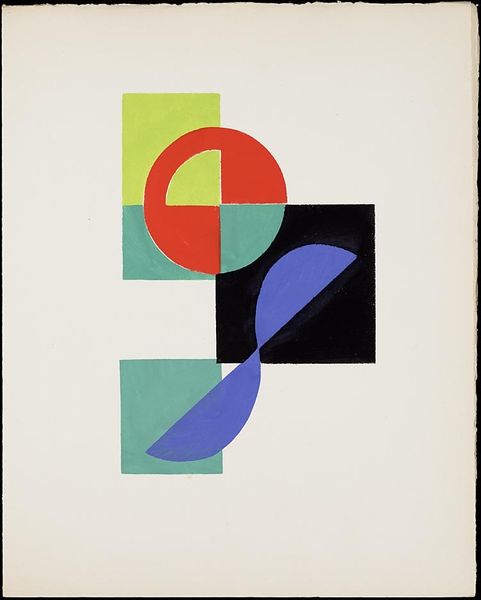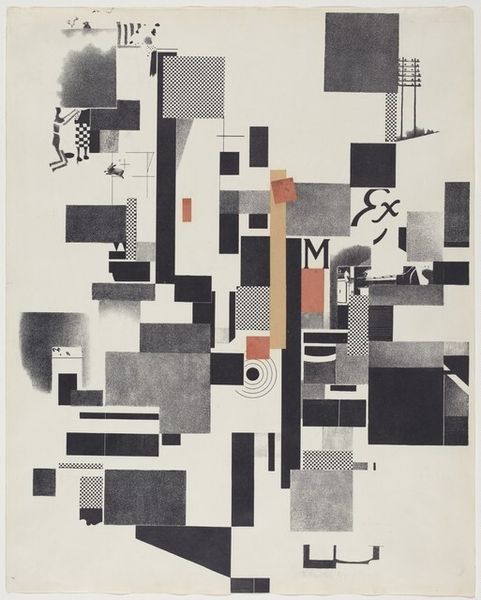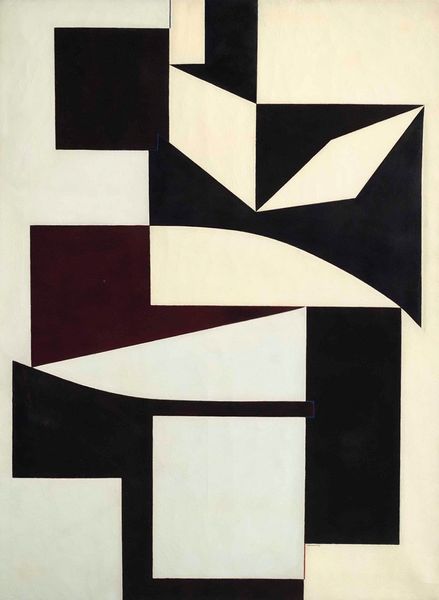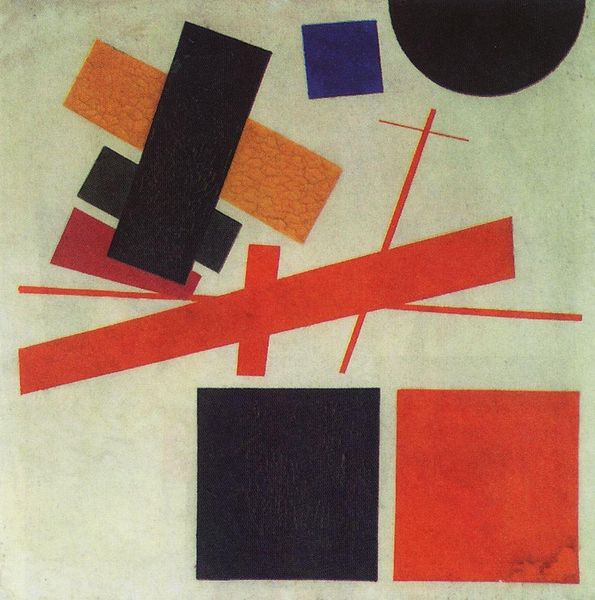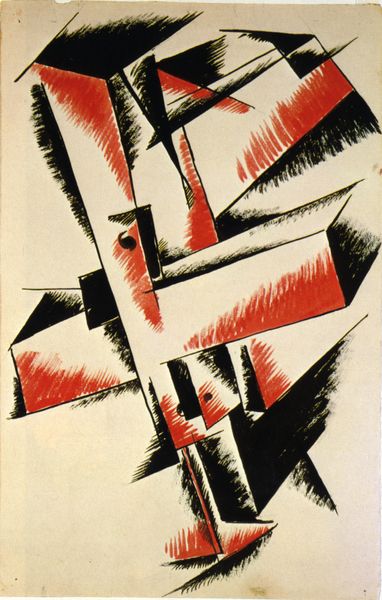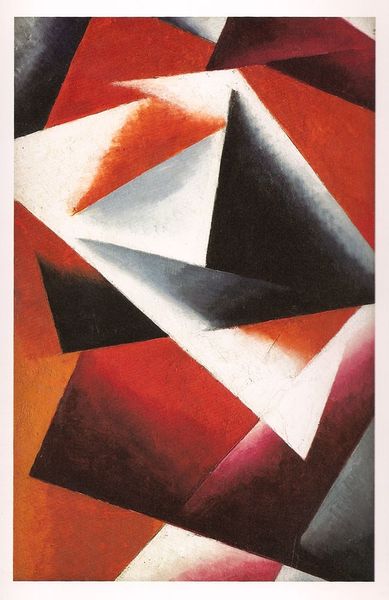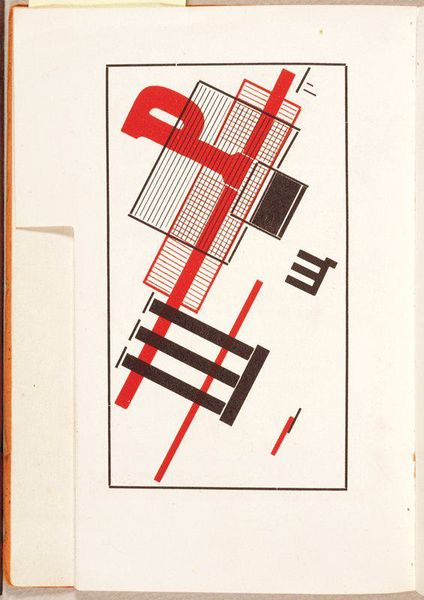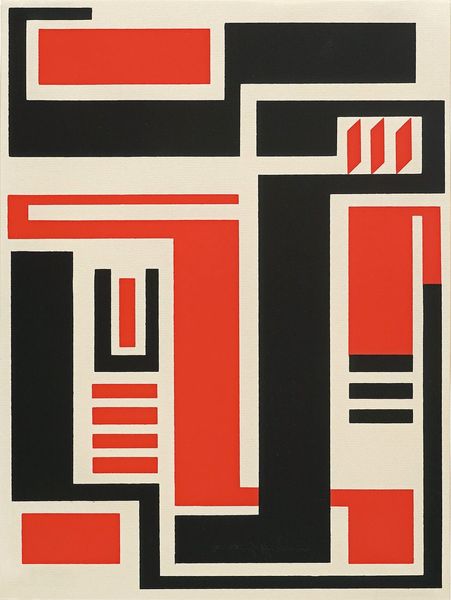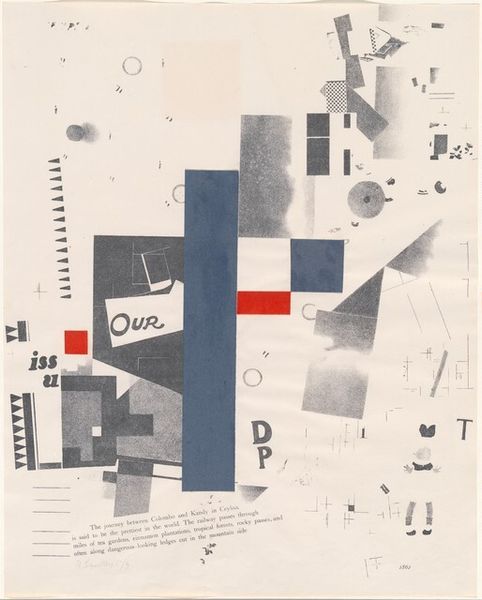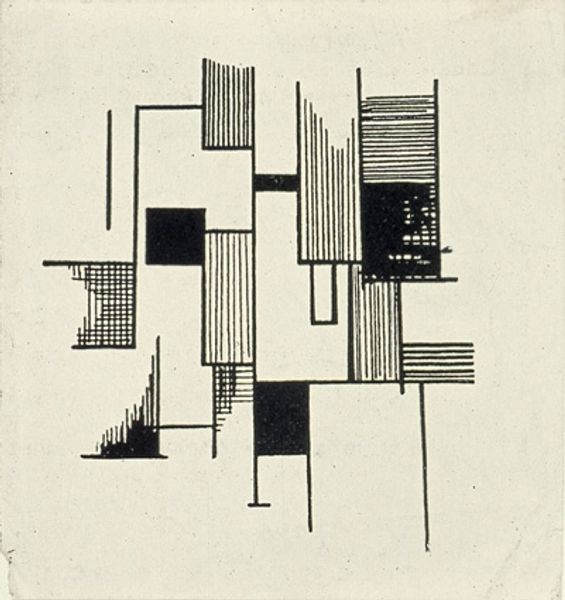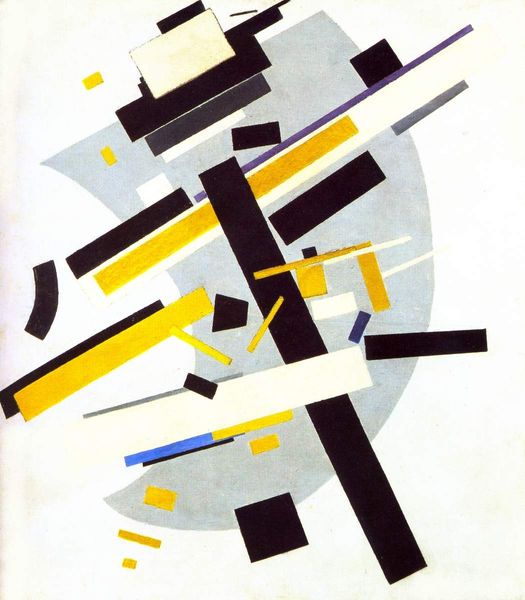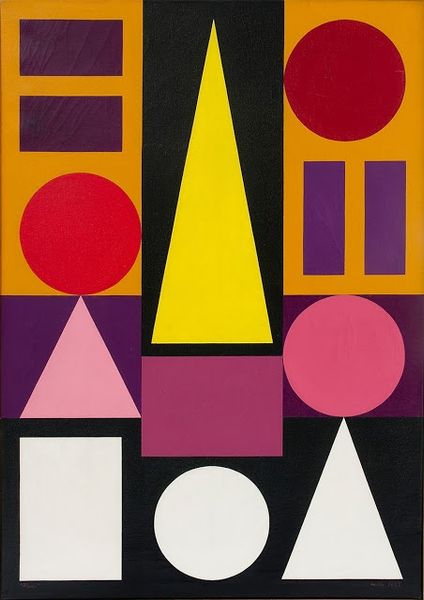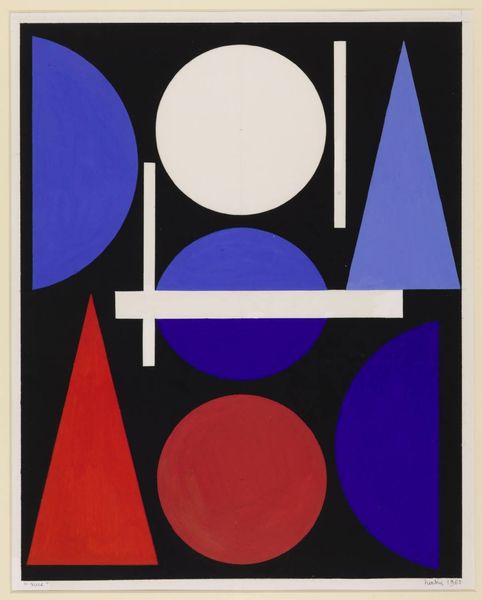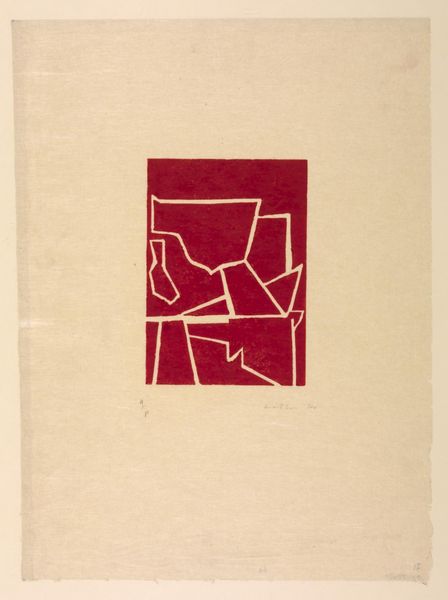
graphic-art
#
graphic-art
#
constructivism
#
form
#
geometric-abstraction
#
abstraction
#
line
Copyright: Henryk Berlewi,Fair Use
Editor: This is "Mechano-Faktura" created in 1924 by Henryk Berlewi, and seems to be a print. It is constructed of very pure geometric shapes, primarily black and red against a white background. I'm really drawn to the way the squares, rectangles, triangles, and circles play off of each other. What do you see in this piece? Curator: For me, it's impossible to look at "Mechano-Faktura" without considering its socio-political context. Berlewi was deeply influenced by Constructivism, an artistic and architectural philosophy born in Russia around 1915 and heavily shaped by the Russian Revolution. Editor: So the revolution had an impact? Curator: Absolutely. Constructivism rejected autonomous art in favor of art with a social purpose. They believed art should reflect modern industrial society and serve the needs of the people. Looking at this piece, the geometric forms aren’t just aesthetic choices; they reflect the machine age, industrial design, and an efficient visual language that’s devoid of ornament and excess. How does knowing that inform your reading? Editor: That definitely provides more insight into what Berlewi may have intended to communicate through his design choices, considering what art was for. What I had initially perceived as a formal arrangement becomes a visual statement reflecting a specific moment in history. Curator: Exactly. Think about the name "Mechano-Faktura." It is a testament to this goal of unifying artistic practice with industry and the principles of mass production. And also, consider that art exhibitions themselves, who curates, and what art is included is always a result of political decisions! Editor: I hadn’t considered that Berlewi's choices were an active challenge to art before this movement! Thank you for expanding my interpretation, seeing art in the socio-political sphere! Curator: My pleasure. It is always a wonderful thing to think more deeply.
Comments
No comments
Be the first to comment and join the conversation on the ultimate creative platform.
